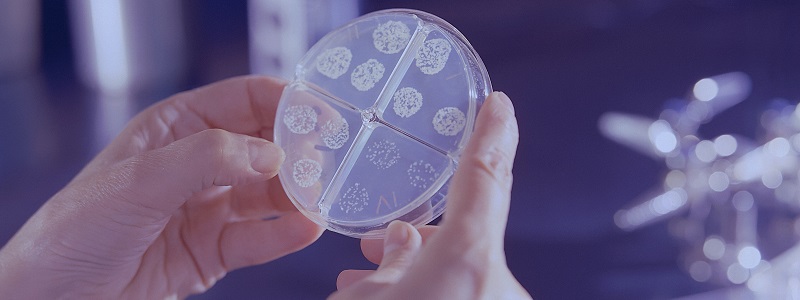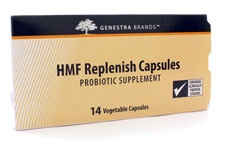Bacteria are everywhere
Bacteria are everywhere – including in and on you – and are an essential part of your biological function.
Can you picture that? The one hundred thousand billion critters that make up a stable population in your gut, on your skin, in your respiratory pathway, and in the genito-urinary tract come in over 600 different species.
Indeed, it might be appropriate to say “we” when talking about the body because the bacteria are so intrinsically involved with the cells’ function.
We are familiar with the bacteria that cause sickness and the antibiotics which kill them.
However, that is a narrow slice of an unseen world teeming with life in your body.
From the beginning
The womb is an environment in which we are bathed in amniotic fluid, an enclosed system with constant exchange from the mother’s blood which diffuses across the vessel walls. Our environmental possibilities expands enormously when we are born and make our way into the world.
The act of birth opens us up to exposure to anything and everything, and the first thing we contact, our mother’s mucous membranes and skin, exposes us to her bacteria, including the essential microflora.
The significant species of microflora acquired at birth are the lactobacteria acidophilus, certain streptococci, and other bacteria at home in the intestines, the enterobacteria.
With breast milk, healthy colonies of a species of microflora called bifidobacteria are encouraged to develop in our intestines.
Following weaning, the normal adult microflora mix develops rapidly. That means that the body naturally selects the best strains of flora to fulfill a purpose in each environment.
There is quite a variation in microflora from place to place within the intestines, as well as in the respiratory, genito-urinary and skin populations. The dominant strain of microflora in the small intestines is lactobacillis acidophilis whereas the dominant strain in the large intestines is bifidobacteria bifidum.
Five Functions of Human Microflora
There are five major functions of the human intestinal flora and all are very important for optimal health.
The first is to provide a barrier to infection by other bacteria species which can cause illness (the pathogenic strains.)
Secondly, they help the immune system, especially since the largest portion of it is found in the beginning sections of the small intestines. The human microflora signal the immune system to strongly stay in its default mode of tolerance, so it doesn’t go off on some tangent wasting its resources and reacting to something that is not really threatening until something worthy of mounting an offensive comes along. This prevents inappropriate inflammatory and allergic responses as well as auto-immune reactions.
The third function of the microflora, which may be surprising, is that they are generators of nutrients, specifically some B vitamins, short chain fatty acids, and amino acids.
Some microflora function by producing enzymes for the breakdown of components of food.
The last function involves the varieties of bacteria that are able to detoxify many substances including drugs.
Dysbiosis – an imbalance of intestinal microflora – is associated with:
- acne
- rosacea
- chronic cradle cap
- psoriasis
- eczema
- tinea (fungal infections)
- vitiligo
- gingivitis
- thrush
- periodontal disease
- all allergies
- asthma
- chronic sinusitis
- chronic upper respiratory infections
- chronic ear infections
- emphysema
- chronic urinary tract infections
- endometreosis
- prostatitis
- chronic viral infections such as herpes, hepatitis, HPV
- infertility
- gas and bloating
- chronic enteritis (digestive disturbance)
- diaper rash
- chronic fatigue syndrome
- fibromyalgia
- Lyme disease
- all autoimmune diseases
- ADD (attention deficit disorder)
- dyslexia
- learning disabilities
- hyperactivity
- autism
Microflora Imbalance
Imbalance in the microflora of the intestines can come from several major or minor causes.
Antibiotic therapy is a prime cause of a major imbalance. In killing the pathogenic (harmful) strains, the essential friendly bacteria can be annihilated as collateral damage.
In intestinal upset such as diarrhea, from food poisoning or other causes, the microflora can be lost. Starvation, even if it is from low-calorie dieting, can also throw it into a major imbalance.
Causes of a minor imbalance in intestinal microflora include general illness, a stressful lifestyle, and excessive alcohol consumption.
Microflora imbalance becomes evident with the symptoms of irregular bowel movements, diarrhea or constipation, and intermittent abdominal pain.
What happens inside is that the population of lactobacilli in the small intestine is reduced. That provides an opportunity for resident species such as Clostridium difficile and yeasts like Candida albicans to fill in the gap, increase their colony size, and actually overgrow and persist for months or years.
Reduced microflora from antibiotics
There are numerous studies showing that antibiotics reduce or eliminate the lactobacillis microflora of the intestines.
Further studies show that the reduction of these intestinal microflora led to the loss of protection against infection from other pathogenic bacteria. Even low doses of antibiotic therapies can produce bacteria resistant to antibiotics, even at times domination of the microflora by antibiotic resistant strains that persist in the intestines.
There are multi-resistant antibiotic strains, and even some that are resistant to all antibiotic drugs.
Another effect of antibiotic administration, studies show, is that Candida albicans proliferates in the intestines and spreads to other locations in the body. Other studies show that the supplementation of normal flora following antibiotic treatment prevented the overgrowth and spreading of Candida albicans.
An important study showed that the microflora rebalanced after antibiotic therapy when mixtures of lactobacillis acidophilis and bifidobacteria were given following therapy. Other species of bacteria, even though lactobacillis was included did not balance the intestinal microflora.
Choosing a Microflora Supplement
So, how do I choose a microflora supplement?
These suggestions are from Nigel Plummer, Ph.D., a leading authority on human microflora.
Non-pathogenic
1. Choose a probiotic (friendly microflora for the intestines) that is completely non-pathogenic.
You see, some bacteria adapt to the situation they are in. When in small quantities, they can be an appropriate component of the mix of species. But left to themselves, or if they predominate in a mix, they can cause havoc and harm.
The few species of bacteria that are completely harmless to humans are strains of lactobacillis and bifidobacterium.
Normally harmless species such as soil microorganisms can turn harmful in the immuno-compromised.
For most of us, eating soil microorganisms is like eating a carrot without washing it. No harm done. For some people, it might even be helpful.
Studies have shown that exposure to “dirt” early in life helps build a healthy immune system. In contrast, those kept in antiseptic environments had more allergies, a sign of a confused immune system.
For those whose immune system is down, however, the bacillus species in the soil microorganisms can overgrow and spread to the whole body. There was one case of confirmed infection of a bacillus species from the soil microorganisms the patient was supplementing, which ended in his death.
Human Bio-identical
2. Use only microflora species that are bio-identical.
The microorganisms that are cultured from cows and pigs do attach some to the gut lining where they belong. However, microorganisms that are cultured from human strains attach significantly more.
Capable of Colonizing
3. The microflora chosen should be capable of colonizing the digestive tract.
That means they must be able to attach to the lining of the small intestine, and for a large percentage of them to actually attach so they can grow and stick around.
The advantage of the human species is that when they attach well to the gut lining, and build a balanced colony.
Stick in the Large Intestine
4. In addition, the microflora must remain within, not necessarily attach to the lining of, the large intestine.
The advantage of the human bio-identical species is that they are able to stick around and build a balanced colony.
Survive passing through the stomach
5. The probiotic flora must be capable of resisting stomach acid and bile salts.
They must pass through the stomach unaffected and start being available for colonization immediately in the small intestine.
Any live microflora will survive beautifully if taken just before, while, or within one-half hour of eating. You see, the empty stomach usually maintains a stomach acid level of pH 1.8 to 2.6, which is very, very acidic. This is partly for the purpose of killing any pathogenic bacteria, since the GI tract functions as a first line defense of the immune system. It is also in readiness for food since the stomach acid begins digestion, but when food is added, the acidity is decreased.
This decrease in stomach acid when food is eaten, down to the range of pH 3.5 to 4.2, is what allows the microflora to survive and pass through the stomach unaffected. This is why it is not necessary to enteric coat the flora.
In fact, enteric coating does not dissolve until it hits the small intestine, and the flora release much later in the GI tract journey, when they are needed in the first parts of the small intestine! So that seemingly great idea doesn’t work in practicality.
Immune Modulate
6. Choose probiotics that have shown to be capable of immuno-modulation in the test tube.
Probiotic organisms have been shown to move the immune system back to its default mode, that of vigilant tolerance, and capable of quickly mounting an immune response.
The immune system can malfunction with an allergic, inflammatory or autoimmune response, and be dominated by aberrant responses by the immune system cells.
The Lactobacillus salavarius species of probiotics in particular shine when looking at microflora that functions in a major way to reduce inflammatory responses.
Quality Assurance
7. Look for probiotics from companies that have a quality assurance management system.
This system would ensure that the numbers of microflora stated on the label do exist when you get the product and that they are still alive, and that the species of microflora can be identified as stated.
In other words, have confidence that the contents of the bottle match what the label claims. This confidence comes from knowing the manufacturer and their practices.
Supported by Clinical Data
8. Look for probiotic products that are supported by clinical data for effectiveness in humans, as found in peer-reviewed published studies.
This means that literature published by the manufacturer is suspect for claims promoting their products. By going through a screening process for publishing, all conflicts of interest are brought to light and the study process is held to strict standards. The probiotics must be tested on humans to know how humans will react.
HMF Probiotics
The microflora that I dispense in my office meets all these criteria.
928-649-9234
Contact me to char how microflora can change your life.
WANT TO USE THIS ARTICLE IN YOUR NEWSLETTER OR WEB SITE? You can, as long as you include this complete blurb with it:
“Naturopathic Physician Dr. Cheryl Kasdorf is a doctor who listens and has answers with a natural approach that works. She is known as the go-to person to get back your get-up-and-go when it is gone, gone, gone. Get her FREE gift “Dr. Kasdorf’s Health Secrets for Feeling & Looking Great” at drcherylkasdorf.com







